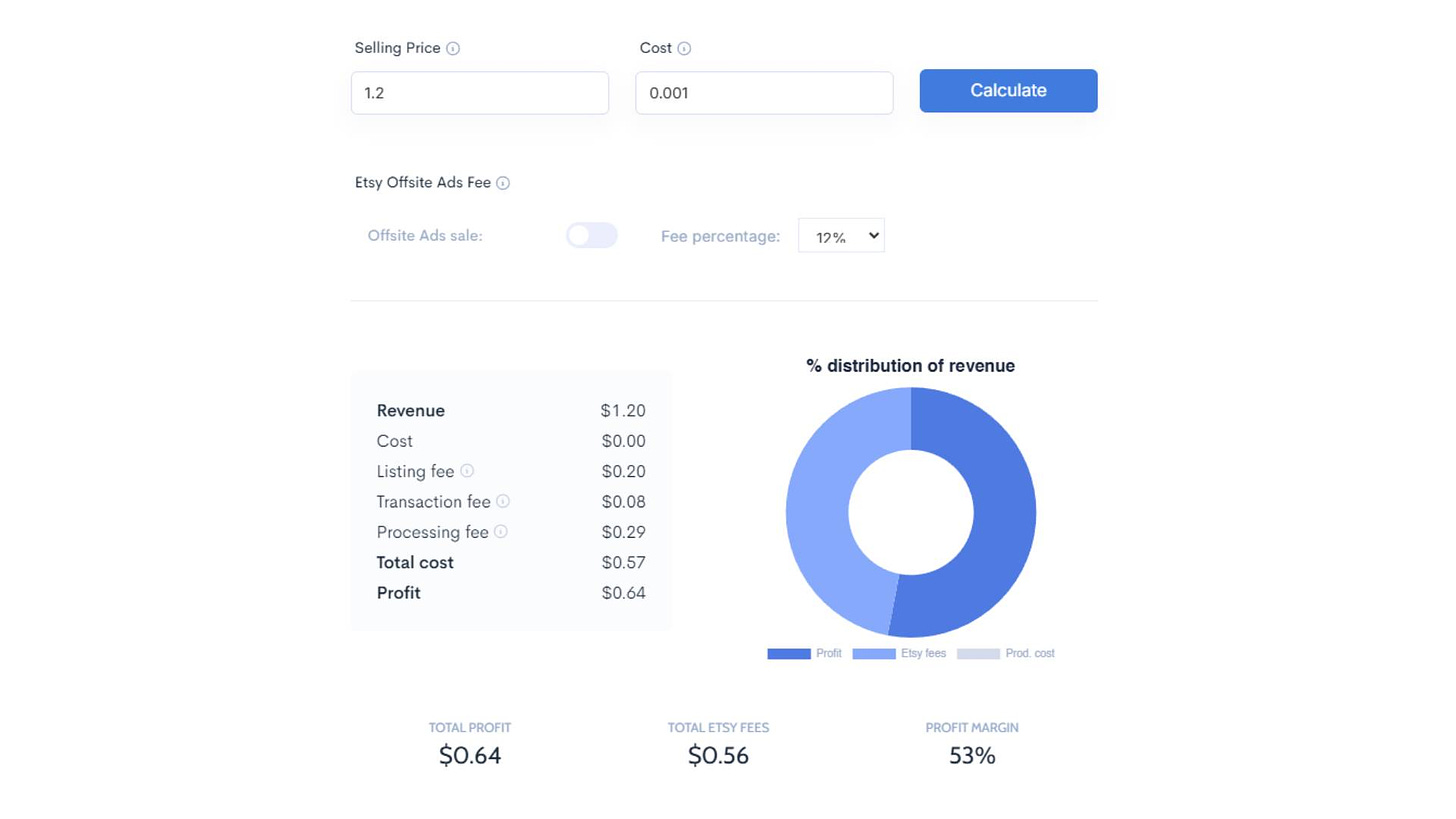Selling AI Images on Etsy (What You Should Know Before Starting)
I used AI to create a simple vector designs.
I'm writing this to share my experience selling AI-generated images on Etsy.
After closing my print-on-demand shop on Etsy, I want to try something new.
I wanted to test the AI in graphic design.
Back then, everyone was talking about it.
So, I started my Etsy shop with big hopes. I was thinking about making quick money by selling digital designs created with AI.
But the reality is a lot different than what I expected.
And I want to share that with you.
Starting with Big Hopes
I simply believed that selling downloadable AI images on Etsy could be massively profitable.
More than my POD shop.
I believed that I could upload more designs than I could with those made entirely by myself.
So, I watched videos, read blogs, and saw people talking about how they make a lot of money with it.
It looked so easy!
But I realized something important: selling digital products on Etsy is a job, and like any job, it takes tons of effort.
I’m not here to complain.
I’m here to share the truth.
Are you thinking of selling AI images or any digital art on Etsy because of the hype?
Let me give you a clear picture of what it’s really like.
“Don't compare your beginning to someone else’s middle.”
The Reality of Selling AI Images
People talk about making “easy money” all the time.
I understand it.
We want THAT easy money. And with AI technology, you can create some shortcuts.
Selling AI images on Etsy looks like that shortcut.
But only on the surface.
Here are a few things I learned:
Volume Matters: To make good money, you need a lot of listings (or products) in your Etsy shop. Just 10 listings won’t do much.
Small Profits: The fees, taxes, and costs add up fast. For each sale, I make a small profit after fees, so the more you sell, the better.
Competition is Crazy High: Thousands and thousands of people are selling similar digital products. If you want to stand out, you have to work hard and find something unique.
Most people don’t talk about these things.
They make it look easy.
But in truth, selling AI images isn’t a “get rich quick” plan.
“There’s no shortcut to success, but there’s always a lesson in every setback.”
My Real Earnings
A short disclaimer here: I don’t say, that all shops that are using AI images are not profitable. The profits I'm going to show you below are based on my shop's pricing, relevant to the competition.
Here is a detailed breakdown of how much I earned selling one AI image on Etsy:
Sale Price: I sold my AI illustration for $1.20.
Etsy Fees: Etsy takes fees every time you sell an item. They charge processing fees of about 3-6% per sale, plus a $0.20 fee each time your listing renews (this means after each sale).
Other Fees: There are also transaction fees and taxes, like VAT if you’re in Europe.
The simple breakdown:
Selling Price: $1.20
Etsy Fees: $0.20 for renewal, plus other small fees
Final Profit: After all the fees, I made about $0.64.
So, I earned 64 cents after all the fees were taken out.
The problem is that I had also used discounts for all my products in my shop to get a boost from Etsy.
And this discount was and still is - 20%
After the discount - $0.51.
This is the reality of selling low-priced products on Etsy.
Every sale counts, but you don’t earn as much as you might think.
It’s Hard to Compete With AI Designs
When I looked around on Etsy, I saw a lot of people selling similar products at low prices.
Some people were selling bundles of hundreds of illustrations for just a few dollars.
My single image was $1.20, so it was hard to stand out.
The main problem I see in this category is…
Many sellers bundle images (like 10 or 100 images) for a low price. This makes it harder for single images to sell.
Low prices are common. If you set a high price, it’s tough to compete with the cheaper listings.
This is making Etsy very competitive.
And selling on this marketplace is about understanding the pricing and what other sellers are offering.
You may need to adjust your prices or offer something unique to get those sales.
“Patience is not the ability to wait, but the ability to keep a good attitude while waiting.”
Lessons I Learned Along the Way
After trying and learning, I want to share a few lessons that should help you if you’re interested in selling on Etsy:
Add Lots of Listings: The more listings you have for sale, the better your chances. Each listing is like a little “ad” that could bring in buyers.
Understand Fees and Taxes: Etsy has many fees, including taxes and renewal fees. Make sure you know these costs before setting your prices.
Find Your Niche: Selling something unique will help you stand out. Find a category or style that isn’t too crowded.
Is This All Worth It (And What Is Next for Me)
Ok, let’s be honest.
After my experience, I’ve realized that selling AI images is not about making quick money.
Even with all that experience, I still sell AI clipart on Etsy.
I have become a Star Seller and have over 500 sales at the time of writing this post.
You see, I’m not giving up!
I’m going to keep selling, but I'm a little smarter now.
I use the listing with one design as a way to get visitors to my shop.
Once a person is in my shop, I offer a few bundles of 5 to 10 graphics at a higher price, which yields greater profits for me.
This is the framework that is working for me.
It is something that is making my shop more profitable.
Should You Sell AI Images on Etsy?
Etsy allows you to use AI for design creation.
At this moment, you have to disclose that when you create the listing.
There is a special column for that.
So, you can start a business by selling AI images on this marketplace.
But you should have realistic expectations.
You may not get rich, but you can learn a lot and make some extra money.
Thank you for reading my story!
I hope it helps you understand what selling on Etsy is really like.
If you have any questions, feel free to ask. I’m happy to share more tips and tricks with you.
Take care, and best of luck with your Etsy journey!
P.S. If you’re ready to get started, don’t forget these three things:
Research your market.
List lots of products.
Keep learning as you go!








